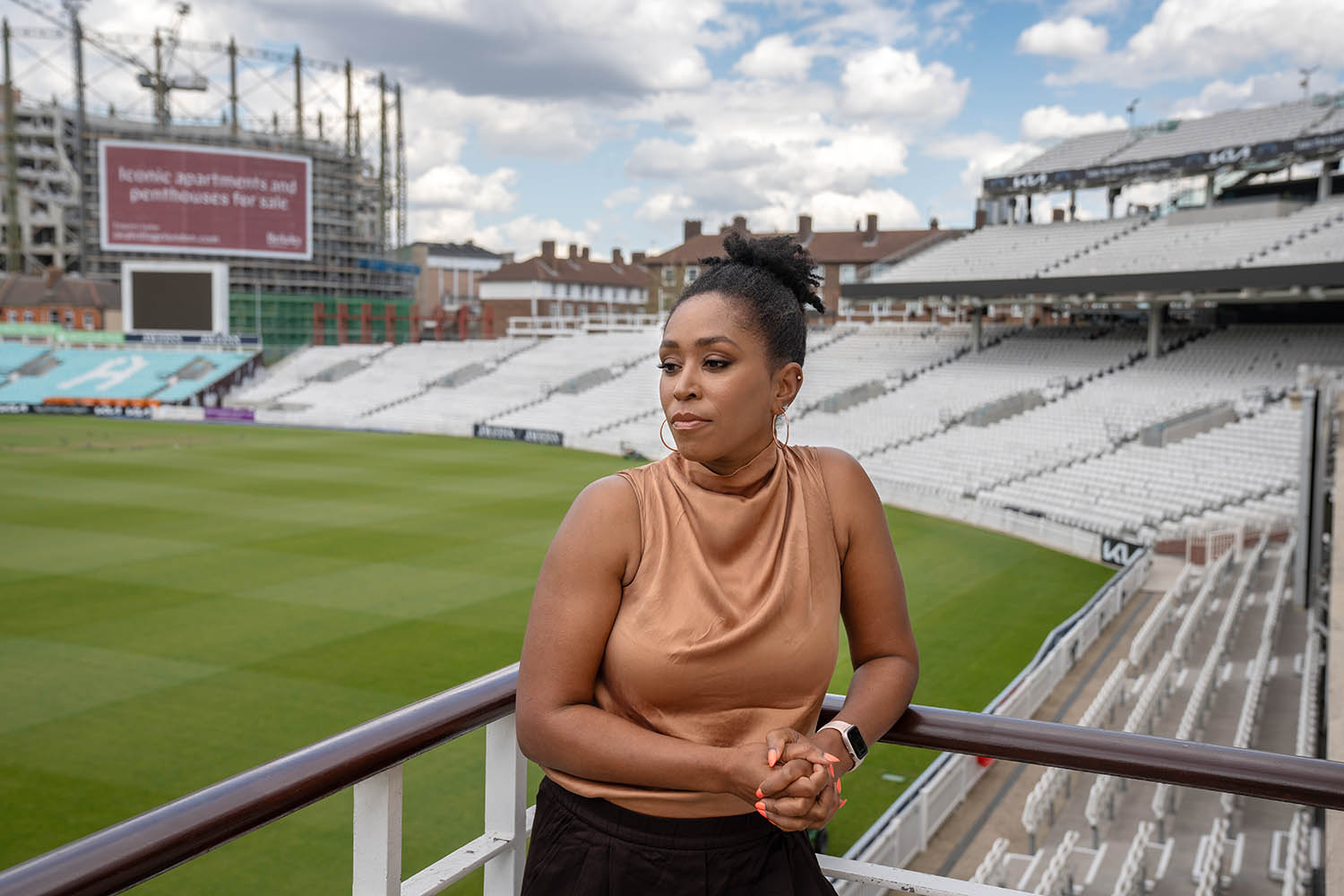An afternoon with Ebony Rainford-Brent unfolds as a whistlestop tour through the whole world of cricket. Whether it’s on The Hundred (“it’s changed my mind”) or the England women’s captaincy (“no easy option”), she does not shy away from an opinion.
Her new book, Test Match Special: How To Read Cricket, is much the same. An A to Z of cricket, it aims to demystify a sport which Rainford-Brent thinks can at times make itself sound overly complicated. “Sometimes in the game, we make it sound like it’s a science on purpose,” she said. “Actually the goal is to hit the ball as hard as you can, or bowl it as fast as you can, or spin it as much as you can. It’s simpler than we make it.”
Rainford-Brent knows how cricket can appear from the outside. Growing up in South London in the 1990s, her first love was football and she dreamed of growing up to be the female Robbie Fowler. There were flirtations with basketball and athletics, but she landed on cricket.
‘You can make a cricket team out of a melting pot of different types of people’
Ebony Rainford-Brent
Introduced to it at primary school through the charity Cricket for Change, she went on to become the first black woman to play for England. Since retiring in 2012, she has gone on to be a celebrated broadcaster as well as Surrey’s first Director of Women’s Cricket. But her passion is improving participation, and that involves changing the perception of prospective players.
“I once went to this school in Myatt’s Fields, down the road from where I grew up near Brixton. I walked in and the kids asked what car I drove. I pointed to a dodgy Ford Fiesta, and they were like ‘Oh my God, you play for England and you’re driving that!’
“They didn’t see the value of playing for your country if you’re going to end up in a Ford Fiesta.
“As the game has progressed, I can point to female and male role models that young kids can look to. You’ve got Nat Sciver-Brunt jetting round the world and there’s a certain glamour in that. The difference between my era and the current era is that there weren’t those role models. You were going to end up broke for your whole career.”
This era has new challenges for players, which has been clear after a disappointing winter for the England women’s team. They crashed out of the T20 World Cup in the group stages before losing every Ashes match in Australia.
The team bristled at media criticism, with the spinner Sophie Ecclestone refusing to do an interview with BBC commentator Alex Hartley.
Rainford-Brent didn’t comment on the controversy directly, but said: “When women’s cricket first started getting coverage, the narrative was, ‘Oh how sweet’. Now we’re shifting to talk about the performance and outcomes. I don’t want us to get carried away that England are a bad team. I felt that was the media narrative a little bit. This isn’t a team you’re going to have to rebuild from the bottom up. You’ve got to make some tweaks and this could be a team to have an era like Australia have had.”
Rainford-Brent’s face lights up with enthusiasm when asked about the woman who will be responsible for those changes. England’s new coach, Charlotte Edwards, was her captain when she played for England.
“My first tour with Lottie was called the World Series and had England, Australia, India and New Zealand. We went for six weeks and we got battered in every game.
“I remember Lottie in the changing room. The words she said changed me as an athlete. You could see that it pained her that we didn’t really understand what it took to be a team. She said: ‘We’re starting again.’ And we did start again.”
Eighteen months later, England had won the Cricket World Cup, the T20 World Cup and the Ashes within a five-month period. That 2009 success remains one of English cricket’s greatest achievements.
“She’s got the ability to inspire others, and that takes a lot,” Rainford-Brent said. “Sometimes the best athletes are great for themselves but don’t necessarily bring others with them. She can do both.”
As Rainford-Brent works to help bring cricket to more young people, she emphasises the value the sport can bring. It is facing competition from not only football, but also sports such as basketball and gaming. But she believes it is a unique proposition.
“It’s a game that different people can bring their strengths to. You don’t have to be good at everything. You can make a team out of a melting pot of different types of people. The issue is, we need to make sure we are there first. A lot of sports have been sharp when we have been slow.
“It’s decades’ worth of work. But I get excited now. I’ve gone from hopeless to hopeful.”
Test Match Special: How to Read Cricket by Ebony Rainford-Brent MBE is out now, published by BBC Books. RRP £16.99

